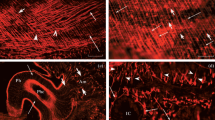Abstract
Both serotonin and the molluskan pedal neuropeptides (TPEPs) cause increased ciliary beating rate of cells of the foot epithelium of the nudibranch mollusk, Tritonia diomedea. Here we compared responses of the ciliated epithelium of the esophagus with that of the foot, and report fundamental differences. Serotonin reduces the ciliary transport rate of the esophagus. We find also that the serotonin driven inhibition of esophagus is blocked and the excitation of foot epithelium is reduced by the serotonin receptor blocker ketanserin. On the contrary, ergometrine completely blocked the serotonin effect in the esophagus, and does not block the serotonin effect in the foot. Neither the TPEP driven excitation of ciliated cells of the foot nor that of the esophagus is blocked by ketanserin and ergometrine. Clearly, serotonin and TPEP regulation of different ciliated epithelia involve different receptors. Thus, mechanisms of serotonin control of different ciliated epithelia in the same animal are apparently fundamentally different, and unlike responses in all previous reports, 5HT here inhibits a ciliated epihelium.
Similar content being viewed by others
References
Aiello, E., Hager, E., Akiwumi, C., Stefano, G. B. (1986) An opioid mechanism modulates central and not peripheral dopaminergic control of ciliary activity in the marine mussel Mytilus edulis. Cell Mol. Neurobiol. 6, 17–30.
Arkett, S. A. (1987) Ciliary arrest controlled by identified central neurones in a urochordate(Ascidiacea). J. comp. Physiol. 161A, 837–847.
Arkett, S. A., Mackie, G. O., Singla, C. L. (1987) Neuronal control of ciliary locomotion in a gastropod veliger (Calliostoma). Biol. Bull. 173, 513–526.
Audesirk, G. J. (1978) Central neuronal control of cilia in Tritonia diomedea. Nature 272, 541–543.
Audesirk, G. (1978) Properties of central motor neurons exciting locomotory cilia in Tritonia diomedea. J. comp. Physiol. 128, 259–267.
Audesirk, G. J., McCaman, R. E., Willows, A. O. D. (1979) The role of serotonin in the control of pedal ciliary activity by identified neurons inTritonia diomedea. Comp. Biochem. Physiol. 62C, 87–91.
Buznikov, G. A., Manukhin, B. N. (1962) The effect of serotonin on motor activity of nudibranch embryos. Zh. Obshch. Biol. 21, 347–352.
Chia, F. S., Buckland-Nicks, J., Young, C. M. (1984) Locomotion of marine invertebrate larvae: a review. Can. J. Zool. 62, 1205–1222.
Cragg, S. M. (1980) Swimming behavior of the larvae of Pecten maximus (L.) (Bivalvia). J. Mar. Biol. Assoc. U. K. 60, 551–564.
Deliagina, T. G., Orlovsky, G. N. (1990) Control of locomotion in the freshwater snail Planorbis corneus. II. Differential control of various zones of the ciliated epithelium. J. exp. Biol. 152, 405–423.
Gaston, M. R. (1998) Neuropeptide TPep action on salivary duct ciliary beating rate in the nudibranch mollusc Tritonia diomedea. Invert. Neurosci. 3, 327–333.
Goldberg, J. I., Koehncke, N. K., Christopher, K. J., Neumann, C., Diffenbach, T. J. (1994) Pharmacological characterization of a serotonin receptor involved in an early embryonic behavior of Helisoma trivolvis. J. Neurobiol 25, 1545–1557.
Gray, J. (1928) Ciliary Movement. Univ. Press Cambridge.
Hall, J. D., Lloyd, P. E. (1990) Involvement of pedal peptide in locomotion in Aplysia: modulation of foot muscle contractions. J. Neurobiol. 21, 858–868.
Holley, M. C., Shelton, G. A. B. (1984) Reversal of the direction of mucus-flow on the ciliated pharynx of a sea anemone. J. exp. Biol. 108, 151–161.
Jorgensen, C. B. (1975a) On gill function in mussel Mytilus edulis. Ophelia 13, 187–232.
Jorgensen, C. B. (1975b) Comparative physiology of suspension feeding. Ann. Rev. Physiol. 37, 57–79.
Koshtoyants, K. S., Buznikov, G. A., Manukhin, B. N. (1961) The possible role of 5-hydroxytryptamine in the motor activity of embryos of some marine gastropods. Comp. Biochem. Physiol. 3, 20–26.
Mackie, G. O., Singla, C. L., Thiriot-Quievzenk, C. (1976) Nervous control of ciliary activity in gastropod larvae. Biol. Bull. 151, 182–199.
Mackey, S., Carew, T. J. (1983) Locomotion in Aplysia? Triggering by serotonin and modulation by bag cells extract. J. Neurosci. 3, 1469–1477.
MacLennan, S. J., Martin, G. R. (1990) Actions of non-peptide ergot alkaloids at 5-HT1-like and 5-HT2 receptors mediating vascular smooth muscle contraction. Naynun Schmiedebergs Arch. Pharmacol. 342, 120–129.
Paparo, A., Aiello, E. (1970) Cilioinhibitory effects of branchial nerve stimulation in the mussel Mytilus edulis. Comp. Gen. Pharmacol. 1, 241–250.
Paparo, A., Hamburg, M. D., Cole, E. H. (1975) Catecholamine influence on unit activity of the visceral ganglion of the mussel Mytilus edulis and the control of ciliary movement. Comp. Biochem. Physiol. 51C, 35–40.
Pavlova, G. A. (1997) Effect of serotonin on locomotion in the freshwater mollusc Lymnaea stagnalis. Zh. Evol Biokhim. Fiziol 33, 599–606.
Stommel, E. (1984) Calcium regenerative potentials in Mytilus edulis gill abfrontal ciliated epithelial cells. J. comp. Physiol. 155A, 445–456.
Syed, N., Harrison, D., Winlow, W. (1988) Locomotion in Lymnaea – role of seronergic motoneurons controlling the pedal cilia. Symp. Biol Hung. 36, 387–399.
Willows, A. O. D., Pavlova, G. A., Phillips, N. E. (1997) Modulation of ciliary beat frequency by neuropeptides from identified molluscan neurons. J. exp. Biol 200, 1433–1439.
Willows, A. O. D., Pavlova, G. A., Phillips, N. E. (1998) Effects of Tritonia neuropeptides and serotonin on ciliary activity. Dokl Akad. Nauk 358, 839–841.
Author information
Authors and Affiliations
Corresponding author
Additional information
Dedicated to Professor János Salánki for his 70th birthday.
Rights and permissions
About this article
Cite this article
Pavlova, G.A., Willows, A.O.D. & Gaston, M.R. Serotonin inhibits ciliary transport in esophagus of the nudibranch mollusk, Tritonia diomedea. BIOLOGIA FUTURA 50, 175–184 (1999). https://doi.org/10.1007/BF03543040
Received:
Accepted:
Published:
Issue Date:
DOI: https://doi.org/10.1007/BF03543040




